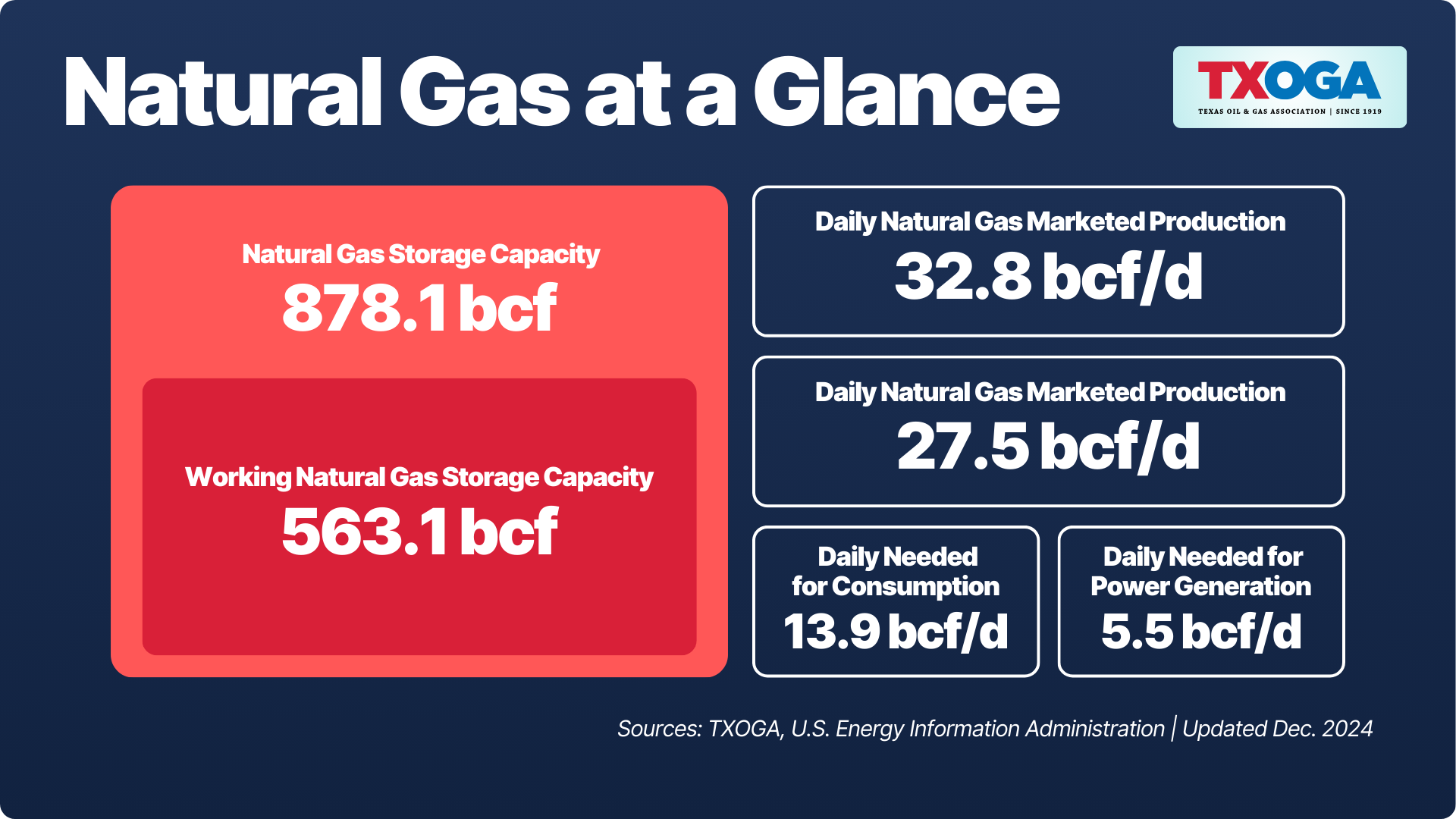Policy & Issues
The Facts on Texas Natural Gas
Texas: The Nation’s #1 Producer of Natural Gas & the World’s #3 Producer
If Texas were a country, it would be the 3rd largest natural gas producer in the world.
Texas-produced natural gas is driving domestic economic and environmental progress, safeguarding our national energy security, and providing critical fuel supplies for our trade partners across the globe.



Liquified Natural Gas (LNG)
LNG is natural gas in liquid form.
Texas-produced natural gas that is transformed into LNG is shipped all over the world via Texas’ 2 commercially operating LNG export facilities. Texas has an additional 3 facilities under construction and 5 approved export facilities not yet under construction. To liquefy natural gas, it is cooled to -260°F. Once LNG reaches its destination, it is turned back into natural gas (called regasification) and then used for residential and commercial distribution as well as an energy source for heating, cooking, and for industrial uses.
Natural gas is a clean, abundant and affordable source of energy. Exports of U.S. LNG are critical to meeting growing energy demand and accelerating environmental progress around the world.
Natural Gas Infrastructure
Redundancy within the natural gas supply chain enables critical components to continue to operate in case of disruptions to the system.
- Texas has over 47,000 miles of natural gas transmission pipelines.
- Texas has 176 natural gas processing facilities.
- Texas has 40 natural gas storage facilitates with 847 BCF of total underground natural gas storage capacity.

Making Environmental Progress
Increased use of natural gas is the #1 reason CO2 emissions have decreased in the U.S. Modern technologies have allowed previously unreachable natural gas to power our lives, making Texas cleaner, stronger and better.
In Texas, natural gas that is flared represents only less than 0.2% of all natural gas produced, and innovation and new technologies continue to drive this number down.

